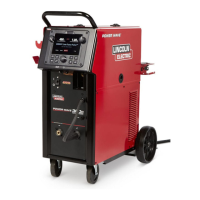
Do you have a question about the Lincoln Electric POWER WAVE 300C and is the answer not in the manual?
| Input Phase | 3 |
|---|---|
| Input Frequency | 50/60 Hz |
| Output Current Range | 5-300A |
| Output Voltage Range | 10 - 40 V |
| Duty Cycle | 60% |
| Processes | MIG, TIG, Stick |
| Wire Feed Speed | 50-1000 ipm |
| Wire Diameter Range | 0.023 - .045 in |
Advice on fume avoidance and ventilation to maintain a safe breathing zone.
Guidance on personal protective equipment for welding to prevent injury.
Warnings for specific hazardous situations and additional safety steps.
Warnings regarding chemicals known to cause cancer or birth defects.
General hazards of arc welding and precautions for specific individuals.
Safety guidelines for operating engine-powered equipment.
Potential dangers and precautions related to EMF generated by welding.
Precautions to prevent electrical shock hazards during welding.
Safety measures to protect against burns from arc rays.
Warnings about hazardous fumes and gases produced during welding.
Risks associated with welding sparks and flammable materials.
Precautions for handling compressed gas cylinders to prevent explosions.
Safety guidelines for electrically powered welding equipment.
Details on EMC compliance and general information about emissions.
User responsibilities for installing and using equipment to manage interference.
Evaluating the surrounding area for potential electromagnetic problems.
Techniques to minimize electromagnetic emissions from the welding equipment.
Proper maintenance, cable management, and bonding for EMC.
Detailed input voltage, current, and output ratings for the machine.
Details on wire feed speed ranges and compatible wire sizes.
Information on supported welding processes and their output parameters.
Specifications for machine size, weight, and operating/storage temperatures.
Essential safety guidelines to follow during equipment installation.
Guidance on choosing an appropriate and safe operating location for the machine.
Instructions for stacking, tilting, input/ground connections, and grounding.
Information regarding electromagnetic compatibility and RF interference.
Details on connecting input power, fuses, wire sizes, and replacing power cords.
Information on how the machine automatically adjusts to different input voltages.
Recommendations for work cable sizes and explanation of voltage sensing.
Guidelines for setting electrode polarity in semi-automatic welding.
Details on connecting cables and understanding inductance effects on welding.
Step-by-step instructions for connecting the shielding gas supply.
Instructions for loading 10-15 lb and 16-44 lb wire spools.
Steps for changing gun bushings and installing drive rolls/guides.
Information on recommended guns and adjusting electrode feeding.
How to set drive roll pressure and adjust the pressure arm for optimal feed.
Connection and polarity details for TIG and SMAW welding processes.
Key safety guidelines to follow before and during machine operation.
Explanation of graphic symbols used on the machine and in the manual.
Understanding the machine's startup process and duty cycle ratings.
Overview of the machine's features, capabilities, and models.
Guidance on suitable welding processes and associated equipment.
Information on supported processes and limitations of the equipment.
Detailed overview of the machine's standard design features and technologies.
Identification and function of controls on the front panel of the standard model.
Identification and function of controls on the front panel of the advanced model.
Description of controls and connectors located on the back of the machine.
Identification of internal components and controls within the machine.
Guidance on weld procedures, material selection, and user responsibility.
Explanation of non-synergic and synergic welding modes.
Overview of controls like Weld Mode, WFS, Amps, Volts, Trim, and Ultimarc.
Explanation of the user interface elements and navigation controls.
Understanding the simplified home screen layout for FCAW welding.
Navigating the SMAW home screen and understanding its controls.
Navigating the GTAW home screen and understanding its controls.
Configuring start and end parameters for GTAW welding.
Navigating the FCAW home screen and understanding its controls.
Navigating the GMAW home screen and understanding its controls.
Configuring start and end parameters for FCAW/GMAW welding.
Managing software updates and data via USB memory media.
Viewing and managing saved welding memories.
Configuring language preferences and display units (metric/imperial).
Adjusting software versions, weld feedback persistence, and home screen layout.
Accessing and adjusting advanced process settings like Arc Force and Hot Start.
Understanding the pinch setting indicator and its effect on arc characteristics.
Understanding the welding screen display for current, voltage, and active settings.
Navigating between screens using the back and home buttons.
Saving and accessing welding memories for different processes.
Steps for updating the user interface software via USB.
Details on Wave Control parameters like Arc Force, Pinch, Ultimarc, AC Frequency, Pulse, etc.
Explanation of the basic 2-step trigger sequence for welding.
Utilizing start and burnback functions for improved arc start and end.
Customizing start, crater, and burnback parameters for optimal welds.
Using the 4-step trigger as an interlock for increased operator comfort.
Manual control of start, crater, and burnback for enhanced welding flexibility.
How to use the combined switch for cold feeding and gas purging.
Kits for dual gas bottles, water cooler adapters, and the water cooler itself.
Accessories like auxiliary kits, welding guns, and connectors for compatibility.
Options for remote output control, arc start switches, and TIG torches.
Adapters for mounting small spools and coils, and related accessories.
Essential safety measures before performing maintenance or servicing.
Guidelines for regular cleaning and annual calibration checks.
Information on machine calibration accuracy and using the Diagnostics Utility.
How to use the guide by identifying symptoms, causes, and actions.
Critical safety warnings to observe when troubleshooting or performing repairs.
Interpretation of status LED lights for normal operation and error conditions.
How to interpret error codes indicated by status lights or beep codes.
List of common error codes for the main control board and wire drive module.
List of common error codes related to the input control board.
Diagnosing and resolving problems with blowing input fuses.
Troubleshooting issues related to the machine not powering up or producing output.
Addressing issues when the thermal LED is on or the real-time clock fails.
Diagnosing causes for general degradation in weld performance.
Resolving wire burnback at weld end and machine output shutdown during welding.
Addressing issues with producing full output and erratic arc behavior.
Resolving problems with connecting to Ethernet or IP address configuration.
Addressing intermittent connection drops and cable placement issues.
Information on Lincoln Electric's commitment to quality and customer support.
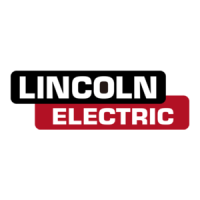
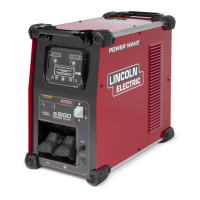
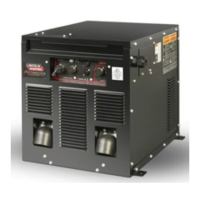
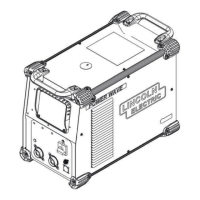
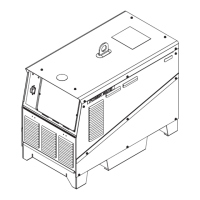
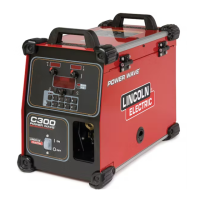
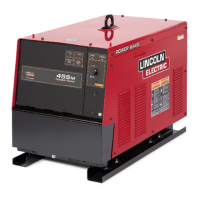

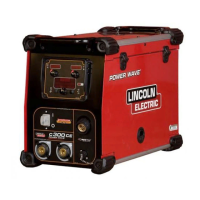

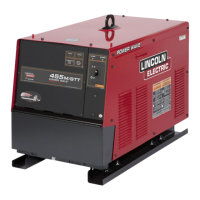
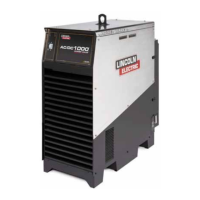
